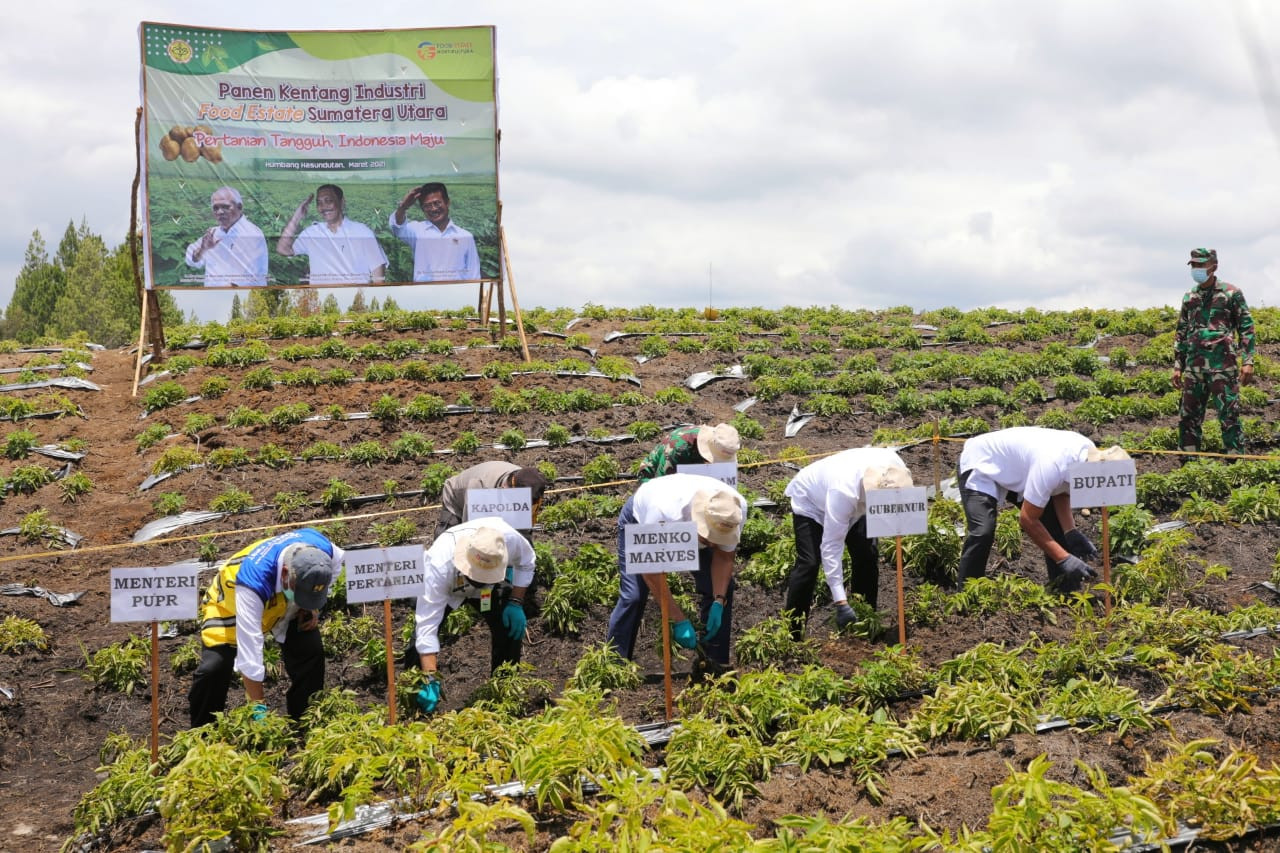Popular Reads
Top Results
Can't find what you're looking for?
View all search resultsPopular Reads
Top Results
Can't find what you're looking for?
View all search resultsThe challenge of monitoring farmers' welfare
Almost 60 percent of poor people live in rural areas, and most of them rely on agriculture as their livelihood.
Change text size
Gift Premium Articles
to Anyone
O
nce, the father of management thinking, Peter Drucker, said "if you cannot measure it, you cannot change it." This quote describes precisely the challenge we are facing when it comes to farmers' welfare in Indonesia.
In the Indonesian context, poverty is still a rural-agricultural phenomenon. Almost 60 percent of poor people live in rural areas, based on a Statistics Indonesia (BPS) report. BPS data also show that most poor people rely on agriculture as their livelihood. According to the National Socioeconomic Survey (Susenas) results, around 46 percent of the heads of poor households depended on agriculture as their main job in 2020.
These statistics show that improving farmer welfare is key for poverty alleviation in Indonesia. Unfortunately, the lack of reliable indicators to measure the development of farmer welfare over time is still an issue.
For the time being, the farmer terms of trade (NTP) have been misused widely to monitor farmer welfare development monthly. The indicator has been used officially by the National Development Planning Agency (Bappenas) as one of the development targets to be achieved. The target is stated in the National Medium-Term Development Plan (RPJMN) 2020-2024.
President Joko “Jokowi” Widodo said in a speech in mid-August of this year that farmers' welfare had improved significantly from June 2020 to June 2021, as indicated by a consistent increase in NTP from 99.6 to 103.59.
However, the use of NTP as an indicator to measure the development of farmer welfare has been questioned and criticized by academia and experts for a long time. As a ratio price index, it is considered less sensitive and even biased in measuring the state and development of welfare. In other words, the relationship between the change of the indicator value and the change of farmer welfare is problematic.
Technically, the indicator is a ratio of two price indexes: the price received by farmers index (IT) and the price paid by farmers index (IB). The former is assumed to capture the change in farmers' income from agriculture due to changes in the prices of their agricultural products. The latter is assumed to measure the change of farmers' expenditure due to the change in prices of goods and services consumed by farmers, agricultural inputs and capital goods.
The interpretation of the indicator is very straightforward. When the indicator (NTP) is higher than 100, that means a good level of welfare for farmers as it indicates that farmers’ income from agriculture products is higher than their expenditure. The higher the value of the indicator, the better the welfare of the farmers is supposed to be. On the contrary, NTP less than 100 indicates poor income as their income from agriculture products is not enough to cover their living costs.
The dynamics of the indicator could provide a wrong signal for the development of farmer welfare. The increase in the price of farmers' agricultural products does not always mean better welfare for them. In the low or drought season, for instance, the prices of agricultural products go up due to limited supplies, but the farmers do not get much for their income.
The scale of the agriculture business run by our farmers is also relatively small on average. For paddy cultivation, for example, the results of the Census of Agriculture in 2013 pointed out that the average paddy field area cultivated by agricultural households was only 0.2 hectares. With that relatively small area of land, the impact of the paddy price increase on farmers' welfare could be minimal.
Besides, the increase in the price of agricultural products such as rice will hit consumers, including the farmers themselves, who are net consumers. A study by the World Bank (2007) using Susenas data revealed that about 6 percent of our rice farmers were net consumers of rice. The proportion could be higher at present.
The inflation caused by the price of agricultural products, particularly rice, will bring down their purchasing power. Therefore, the issue is how to formulate policies that can strike a balance between increasing NTP and protecting consumers simultaneously.
Realizing those limitations, BPS has avoided suggesting NTP as an indicator to measure the level and development of farmers' welfare in its public information releases. Some experts and academics have also come up with an idea to modify the computation of the index to represent welfare well. Unfortunately, there is still no concrete solution to this issue. The indicator is still widely "misused" as a welfare indicator.
One option is constructing a new indicator for farmer welfare monitoring instead of using NTP. The new indicator should capture farmers' real income comprehensively from both agriculture and non-agriculture activities regularly.
In doing so, the results of the Agriculture Integrated Survey (AGRIS) that will be conducted every year as the follow up of the 2023 Census of Agriculture can be considered.
Moreover, the average income of small-scale food producers, a concept proposed by the Food and Agriculture Organization (FAO) globally, can also be used to monitor farmers' welfare development. The indicator could be produced from the AGRIS, and the computation takes into account the income of farmers and their production capacity.
***
The writer is a data analyst at Statistics Indonesia. The views expressed are his own.










